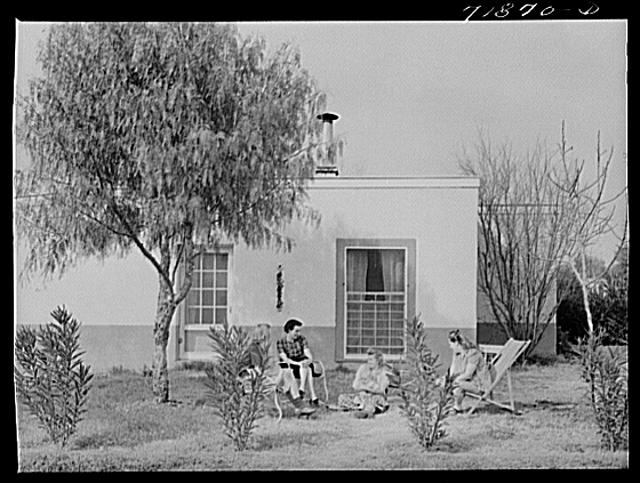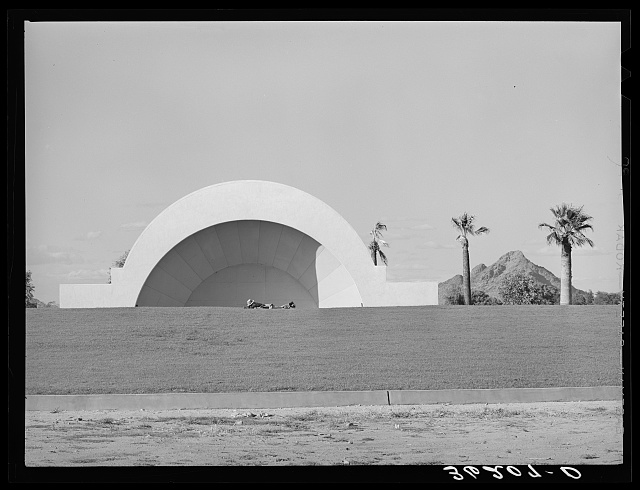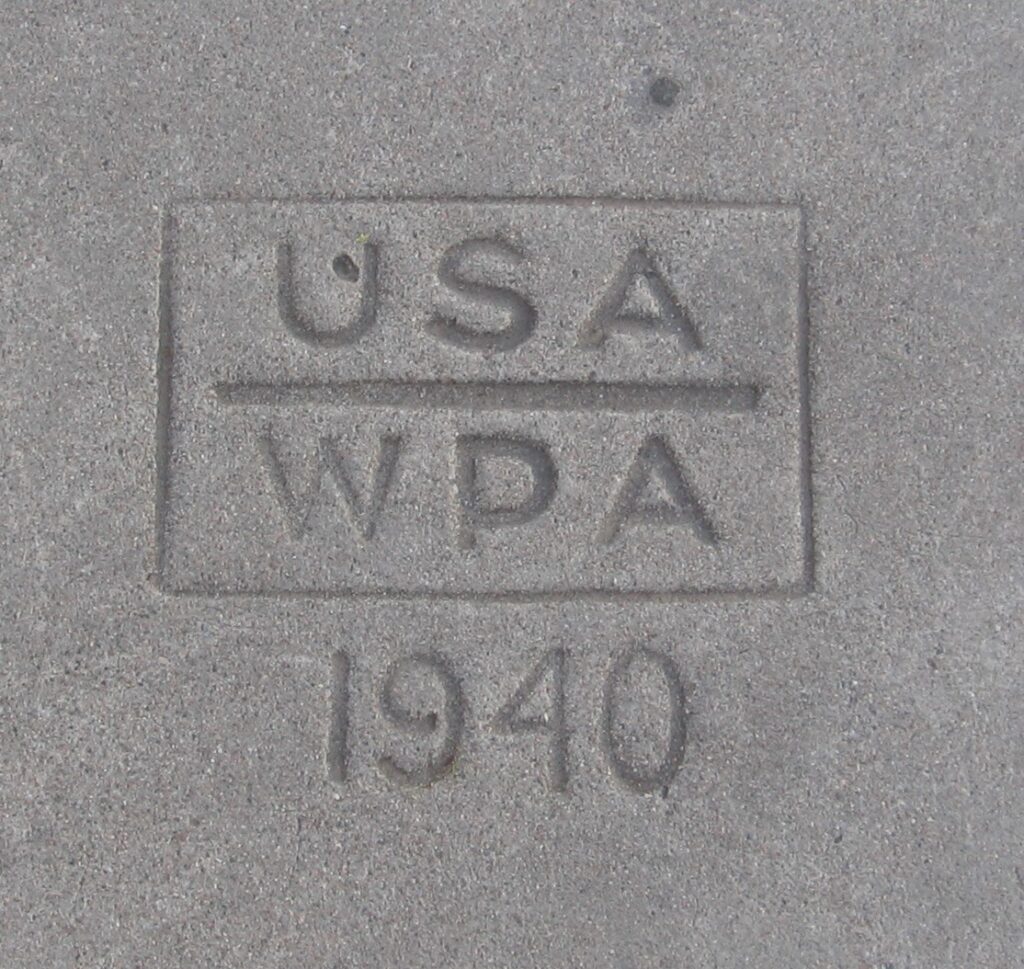The New Deal
Donna Reiner has written many articles over the years for the Arizona Republic and others about Phoenix history and memorials. She is a regular contributor to our newsletter. This month, Donna tells us about the many New Deal homes that were built during the Great Depression to help put people back to work.
————-
During the Great Depression, FDR along with Congress created a number of programs to help put the unemployed back to work. Arizona was one of those states which received the benefits from many of those programs. You may be familiar with some of these programs or at least their products: Civilian Conservation Corps (CCC); Works Progress Administration (WPA); WPA Arts Project (WRAAP); Farm Security Administration (FSA); and, Public Works Administration (PWA). And all these initials can get confusing.
I suspect that the most familiar agency and its works is the WPA. Who hasn’t seen sidewalks marked WPA and a date while walking in Phoenix or a lot of other communities across the country? You can also find them on the curbs. Be sure to look the next time you are walking in say Coronado Historic District or along east Van Buren.
But the WPA also was instrumental in development of some of the infrastructure of our parks. For instances, the WPA built the bathhouse for the pool at Coronado Park and the bandshell and the clubhouse at Encanto Park. Upgrades were also made to Grant Park and Eastlake Park.
Perhaps South Mountain Park, though, received the most attention in the area of parks. The CCC went into action building roads and trails, ramadas, lookout shelters, and erosion control structures. The next time you visit the park, notice the rock entrance station. And did you know that there was a CCC campsite in the park?
Government buildings arose too. Which ones? The 1938 addition to the Arizona Capitol, the Post Office at Central and Fillmore, the grandstand at the State Fairgrounds, and the old adobe National Guard Arsenal in Papago Park. Many of these buildings also sport some beautiful art work. Then there were schools such as Phoenix College buildings on the new campus and North High School to meet the needs of the exploding enrollment at Phoenix Union High School, and improvements for Alhambra School.
But there are two projects that most Phoenicians do not know: Phoenix Homesteads and Camelback Farms. Only one still exists.
Phoenix Homesteads, sponsored by the Resettlement Administration, was a type of public housing on lots which were large enough that they allowed the residents to have gardens and small farm animals that could feed the residents making them self-sufficient. Today Phoenix Homesteads, a unique historic district with 45 homes between 26th – 28th streets and Thomas and Osborn roads, appears as an oasis in our desert environment.
About a half-mile north of Phoenix Homesteads was Camelback Farms along Indian School Road and 27th Street. The 84-acre property sponsored by the Farm Security Administration (FSA) was operated as a co-op and training facility with 35 homes and a community center. There were several other such FSA co-ops in the valley. Camelback Farms had a dairy. But all things come to an end. In April 1945, the acreage went up for sale and today it is covered with houses.
The following link will help you discover other places throughout the state: https://livingnewdeal.org/arizona




